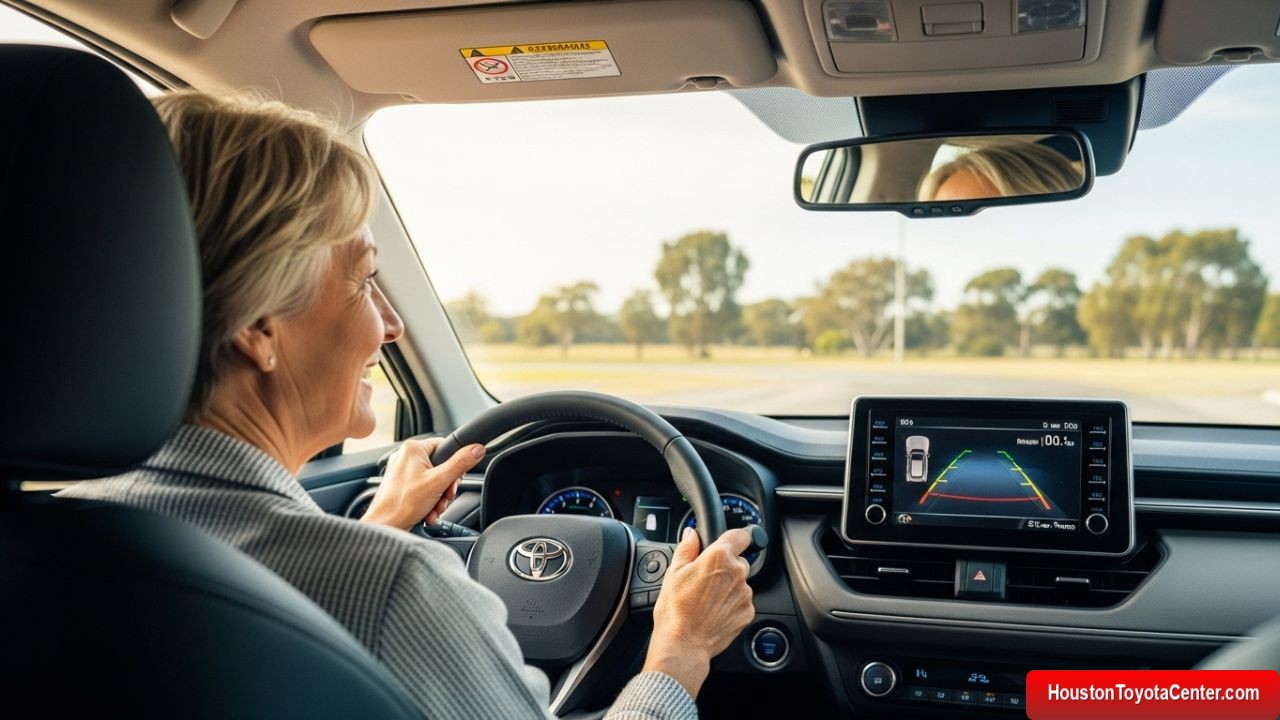Aging is a natural part of life, and with it comes change — change in how we move, see, react, and experience the world around us. For senior drivers, these changes can influence not only their independence but also their safety behind the wheel. Maintaining mobility while ensuring safety requires awareness, adaptation, and support from family, communities, and automakers alike.
In this comprehensive guide, we’ll explore how seniors can continue to drive safely, what challenges they face, and the latest automotive technologies designed to help them stay confident and secure on the road.
The Importance of Driving for Seniors
Driving represents more than just transportation — it’s freedom, autonomy, and connection to community. For older adults, giving up the ability to drive can lead to isolation, depression, and reduced quality of life. Studies have shown that seniors who maintain safe driving habits often experience higher levels of independence and mental well-being.
However, aging brings physical and cognitive changes that can impact driving ability, such as slower reflexes, vision changes, and reduced joint flexibility. Recognizing these changes early allows seniors to adjust safely without sacrificing mobility.
FREE: Quickly identify and understand problems with your vehicle 🚘
CLICK HEREUnderstanding How Aging Affects Driving
Aging affects everyone differently, but there are some common physiological and cognitive shifts that influence driving performance:
| Factor | How It Affects Driving | Possible Solutions |
|---|---|---|
| Vision | Reduced night vision, glare sensitivity, difficulty judging distances. | Regular eye exams, anti-glare glasses, avoiding night driving. |
| Hearing | Trouble hearing horns, sirens, or approaching vehicles. | Regular hearing checks, use of hearing aids. |
| Reaction Time | Slower response to unexpected situations. | Maintaining safe following distances, avoiding high-traffic times. |
| Joint and Muscle Stiffness | Difficulty turning the steering wheel, checking blind spots. | Stretching, physical therapy, cars with adjustable steering. |
| Cognitive Changes | Challenges with multitasking, navigation, or attention span. | Cognitive exercises, using navigation systems. |
Recognizing these challenges is the first step toward adapting for safety.
Signs It Might Be Time to Adjust Driving Habits
Family members often notice subtle changes before seniors do. Some warning signs include:
- Frequent close calls or minor scrapes.
- Difficulty staying in the lane.
- Confusion at intersections.
- Missing traffic signs or signals.
- Increased anxiety while driving.
- Friends or family express concern.
These signs don’t always mean a senior must stop driving completely — but they may indicate that it’s time to modify habits, routes, or even vehicles.
Practical Tips for Senior Drivers
Staying safe behind the wheel involves both physical and mental readiness. Here are key tips for seniors who want to keep driving confidently:
1. Stay Physically Active
Exercise can improve flexibility, reaction time, and alertness. Even light activities like walking, yoga, or water aerobics can enhance coordination and endurance — essential traits for safe driving.
2. Keep Up with Health Appointments
Regular visits to the doctor, optometrist, and audiologist can catch problems before they interfere with driving. Properly managed vision, hearing, and medication use make a big difference.
3. Plan Routes Carefully
Avoid congested highways, rush-hour traffic, and unfamiliar areas. Using GPS or apps that provide real-time traffic updates can help seniors choose easier, safer routes.
4. Avoid Night and Bad Weather Driving
Glare, reduced visibility, and slippery roads are harder to manage with age. When possible, drive during daylight and fair weather.
5. Keep the Vehicle Senior-Friendly
Choose cars with automatic transmissions, large mirrors, backup cameras, and easy-to-read dashboards. Modern cars also offer advanced driver assistance systems (ADAS) that can be lifesavers.
Modern Safety Technologies for Senior Drivers
Today’s vehicles — especially those from safety-conscious automakers like Toyota — come packed with features designed to support drivers of all ages. For seniors, these technologies can provide peace of mind and compensate for natural changes that come with aging.
Toyota Safety Sense™ (TSS)
Toyota’s suite of safety technologies includes:
- Pre-Collision System with Pedestrian Detection – Detects vehicles and people ahead, warning the driver and automatically applying brakes if necessary.
- Lane Departure Alert with Steering Assist – Helps drivers stay centered in their lane.
- Dynamic Radar Cruise Control – Maintains a safe distance from the car ahead automatically.
- Automatic High Beams – Adjusts headlights for optimal visibility without blinding others.
These features are particularly helpful for seniors who may have slower reaction times or reduced visibility.
Blind Spot Monitor and Rear Cross-Traffic Alert
Turning and backing up can be challenging for seniors with limited neck mobility. These systems provide visual and audible alerts when another vehicle is in a blind spot or approaching from the side while reversing.
Parking Assistance
Many newer Toyota models come with Intelligent Parking Assist — the car helps steer into a parking space while the driver controls speed. This reduces stress in tight spots.
Digital Rearview Mirrors
This feature uses a camera instead of a traditional mirror, offering a wider and clearer view — ideal for those with limited neck mobility or rear visibility.
Adapting Your Vehicle for Senior Comfort
If buying a new car isn’t an option, small modifications can make a big difference in comfort and safety:
- Install seat cushions or back supports to improve posture and visibility.
- Use pedal extenders if reaching the pedals comfortably is difficult.
- Add panoramic mirrors to reduce blind spots.
- Use hand controls for drivers with leg or foot limitations.
- Ensure dashboard instruments are well-lit and easy to read.
Mental Health and Confidence Behind the Wheel
Confidence is key to safe driving. Seniors who feel anxious may either drive too cautiously (causing road confusion) or overcompensate with risky behavior. To maintain mental balance:
- Take defensive driving courses for seniors. These courses refresh knowledge and help adapt to new road rules and technologies.
- Drive with a companion until confidence returns.
- Stay socially active — isolation can increase anxiety and decrease alertness.
- Avoid multitasking, such as eating or using a phone while driving.
Family Conversations: How to Talk About Driving
Discussing driving limitations with a senior loved one can be delicate. Approach it with empathy and focus on safety, not control. Use these tips:
- Choose a calm, private setting.
- Express concern, not criticism.
- Use specific examples (“You seemed uncomfortable driving at night”) instead of general statements.
- Offer alternatives: ridesharing, community transport, or family carpooling.
- Involve a doctor or driving rehabilitation specialist if needed.
Sometimes, a professional opinion can ease the emotional weight of deciding to reduce or stop driving.
Alternatives When Driving Is No Longer Safe
Losing the ability to drive doesn’t mean losing independence. There are several options seniors can explore:
| Alternative | Description | Best For |
|---|---|---|
| Public Transit | Buses, subways, or community shuttles. | Seniors in urban areas. |
| Rideshare Apps (Uber, Lyft) | Easy app-based transport with driver ratings. | Tech-comfortable seniors. |
| Paratransit Services | Transportation for those with mobility limitations. | Seniors with disabilities. |
| Volunteer Driver Programs | Local volunteers provide rides for errands and appointments. | Community-focused seniors. |
| Family or Friend Support | Coordinated driving schedule. | Seniors with family nearby. |
Some communities, including in Houston, Texas, offer senior-specific transportation programs that prioritize affordability and accessibility.
When Is It Time to Stop Driving?
Stopping driving is one of the hardest decisions for seniors. Warning signs include:
- Frequent near-misses or accidents.
- Difficulty recognizing familiar routes.
- Ignoring traffic signals or confusing pedals.
- Needing frequent reassurance or directions from passengers.
If these occur often, consult a driving rehabilitation specialist. They can assess abilities and recommend next steps — whether it’s a temporary driving pause or full retirement from the road.
The Role of Family and Caregivers
Family support plays a major role in helping seniors transition smoothly. Encouragement and understanding go further than criticism.
You can:
- Help them explore vehicles with better safety features.
- Teach them how to use navigation apps or voice commands.
- Accompany them on practice drives in new routes.
- Celebrate their safe driving milestones.
Remember: it’s not about taking freedom away — it’s about preserving safety and dignity.
The Future of Senior Mobility
The future of driving looks bright for seniors. With technologies like autonomous vehicles, AI-powered driver assistance, and smart road systems, safety is becoming more inclusive.
Automakers like Toyota are actively designing vehicles with seniors in mind — focusing on ergonomic interiors, intuitive technology, and accessibility. For example:
- Toyota Camry and Highlander offer low step-in heights and supportive seats.
- Toyota RAV4 Hybrid combines smooth handling with easy-to-use digital displays.
- Toyota Sienna Hybrid features hands-free sliding doors and spacious interiors perfect for aging drivers and passengers.
As these innovations continue, older adults will be able to drive longer, safer, and with greater comfort.
Key Takeaways
- Aging affects driving, but awareness and technology can keep seniors safe.
- Routine health checks, exercise, and vehicle adaptation are essential.
- Toyota’s advanced safety features can help seniors maintain confidence.
- Open family communication ensures transitions happen with dignity.
- The future of mobility is inclusive — and seniors are part of it.
Conclusion
Driving in later life is a journey of adaptation, not limitation. With the right mindset, medical care, and automotive technology, seniors can continue to enjoy the freedom of the open road while staying safe.
Every senior deserves a vehicle — and a support system — that grows with them. Whether it’s upgrading to a car equipped with Toyota Safety Sense or simply adjusting driving routines, small changes can lead to lasting independence.
At Houston Toyota Center, we believe in empowering every generation to drive with confidence. Because safety, comfort, and peace of mind never go out of style. 🚗✨


Leave a Reply